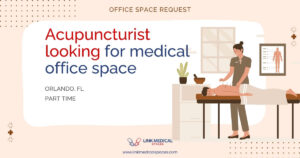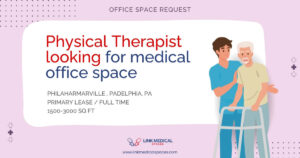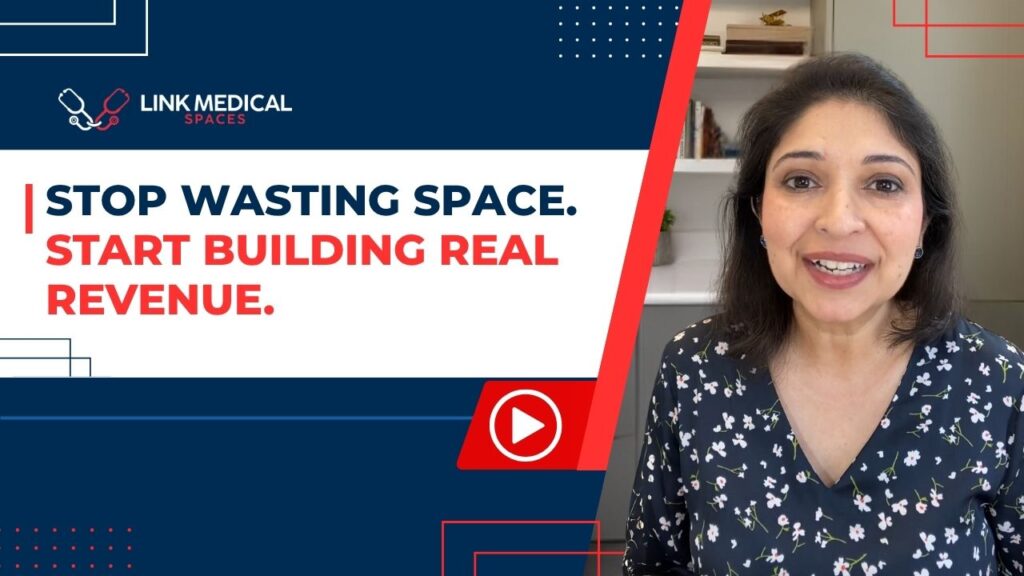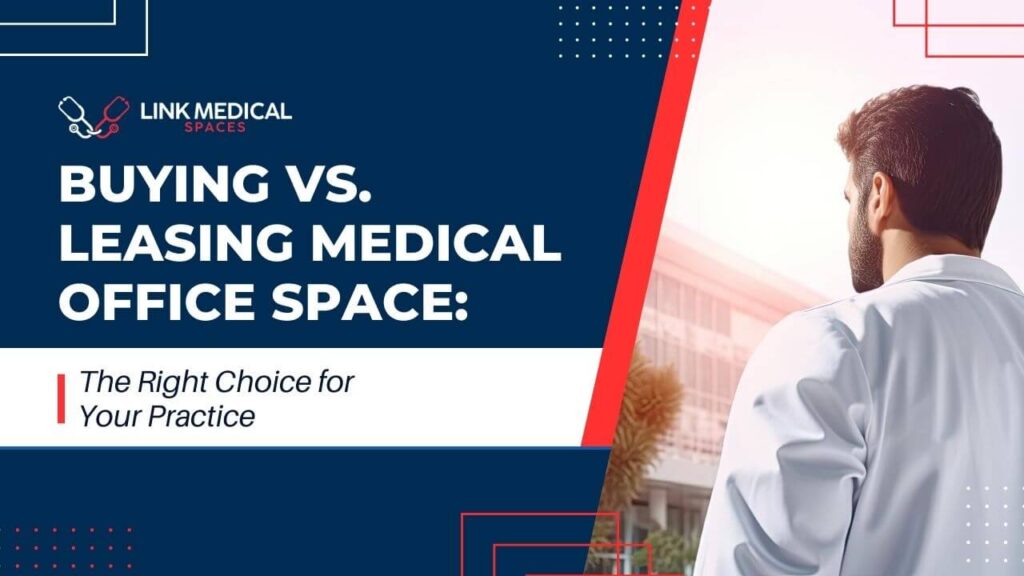Deciding to lease medical office space is a significant step for any healthcare practice. Unlike standard commercial leases, medical office leases come with unique considerations tailored to the specific needs of healthcare providers. Understanding these nuances is crucial to ensure the lease aligns with your practice’s operational and financial goals.
In this guide, we’ll delve into the critical components of a medical office lease, providing real-world examples to illustrate each point. Our aim is to equip you with the knowledge to navigate lease negotiations confidently.
Base Rent and Rent Escalation
Base Rent is the foundational cost of leasing the space, typically quoted as an annual rate per square foot. However, it’s common for leases to include rent escalation clauses, which outline periodic increases in rent over the lease term.
Example Clause:
“Tenant shall pay to Landlord a base rent of $30.00 per rentable square foot annually, payable in equal monthly installments. Beginning on the first anniversary of the Commencement Date, and on each subsequent anniversary, base rent shall increase by 3% annually.”
Considerations:
- Predictability: Fixed annual increases provide clarity for budgeting.
- Market Alignment: Ensure escalation rates are in line with local market trends to avoid overpaying.
Tenant Improvement (TI) Allowance
Medical practices often require specialized build-outs to accommodate equipment and compliance standards. A Tenant Improvement Allowance is a sum provided by the landlord to offset these customization costs.
Example Clause:
“Landlord agrees to provide a Tenant Improvement Allowance not to exceed $50.00 per rentable square foot. This allowance may be applied toward construction costs, architectural fees, and necessary permits, subject to Landlord’s approval of plans and contractors. Any unused portion of the allowance shall not be credited toward rent.”
Considerations:
- Scope: Clarify which expenses are covered, including hard costs (construction) and soft costs (design fees).
- Approval Process: Understand the landlord’s requirements for approving contractors and designs.
- Unused Funds: Negotiate whether unused allowance can be applied to other expenses or rent.
Common Area Maintenance (CAM) Fees
CAM fees are charges for the upkeep of shared spaces such as lobbies, restrooms, and parking areas. These fees are typically apportioned among tenants based on the size of their leased space.
Example Clause:
“Tenant shall pay its Pro Rata Share of Common Area Maintenance (CAM) charges, which include but are not limited to landscaping, janitorial services, building insurance, and property taxes. Tenant’s Pro Rata Share is calculated based on the ratio of the Premises’ square footage to the total leasable square footage of the Building.”
Considerations:
- Transparency: Request detailed annual statements of CAM expenses.
- Caps: Negotiate a cap on annual increases to prevent unexpected cost surges.
- Inclusions/Exclusions: Clearly define what services are covered under CAM fees.
Exclusivity Clause
An exclusivity clause prevents the landlord from leasing adjacent spaces to direct competitors, safeguarding your patient base.
Example Clause:
“Landlord agrees not to lease any other premises within the Building to a tenant whose primary business is [specific medical service], thereby granting Tenant exclusive rights to provide such services within the Building.”
Considerations:
- Specificity: Clearly define the scope of restricted services to avoid ambiguities.
- Enforcement: Ensure the clause includes remedies should the landlord breach this agreement.
Use Clause
The use clause specifies the permitted activities within the leased space. A narrowly defined use clause can limit your practice’s ability to offer new services.
Example Clause:
“The Premises shall be used solely for the operation of a [type of medical practice], including ancillary services typically associated therewith, and for no other purpose without prior written consent of Landlord.”
Considerations:
- Flexibility: Negotiate broader language to accommodate future service expansions.
- Compliance: Ensure the permitted use aligns with zoning laws and building regulations.
Compliance with Healthcare Regulations
Medical offices must adhere to various regulations, including the Health Insurance Portability and Accountability Act (HIPAA) and the Americans with Disabilities Act (ADA). The lease should delineate responsibility for compliance.
Example Clause:
“Tenant shall, at Tenant’s sole cost and expense, comply with all applicable federal, state, and local laws, ordinances, regulations, and directives, including but not limited to HIPAA and ADA, and shall be responsible for any alterations or improvements necessary to ensure such compliance.”
Considerations:
- Responsibility: Clarify which party bears the cost of compliance-related modifications.
- Existing Conditions: Assess the current state of the premises to identify potential compliance issues before signing.
Assignment and Subleasing
The ability to assign the lease or sublease the space provides flexibility should your practice’s circumstances change.
Example Clause:
“Tenant shall not assign this Lease or sublet the Premises, in whole or in part, without Landlord’s prior written consent, which consent shall not be unreasonably withheld, conditioned, or delayed.”
Considerations:
- Consent Parameters: Negotiate terms that prevent the landlord from arbitrarily withholding consent.
- Liability: Understand that, typically, the original tenant remains liable under the lease after an assignment or sublease.
Right of First Refusal and Expansion Rights
As your practice grows, you’ll want the option to expand without relocating. A Right of First Refusal (ROFR) or expansion clause gives you the opportunity to lease adjacent space before it’s offered to others.
Example Clause:
“Tenant shall have a continuing Right of First Refusal to lease any adjacent space that becomes available during the term of this lease, on the same terms and conditions as offered to any third party.”
Considerations:
- Timeframe to Respond: Ensure the lease gives you adequate time to exercise your right.
- Applies to Adjacent Units Only: Be clear whether the clause applies to specific suites or the entire building.
- Comparable Terms: Verify that you’ll get to match third-party offers under the same economic terms.
Early Termination Clause
While not always offered, an early termination clause gives you flexibility if your circumstances change—such as relocation, practice sale, or retirement. Without this clause, breaking a lease early can be expensive.
Example Clause:
“Tenant shall have the option to terminate this Lease after the fifth year of the initial term, upon 180 days’ written notice and payment of a termination fee equal to three months’ base rent.”
Considerations:
- Trigger Events: Some leases allow termination under specific events (e.g., sale of practice, zoning changes).
- Termination Fees: These can range from a few months’ rent to repayment of unamortized TI costs.
- Notice Periods: Ensure the timeline is realistic for your planning needs.
Holdover Provisions
A holdover clause applies if you stay in the space beyond your lease term without signing a renewal. Without favorable terms, you could face steep penalties.
Example Clause:
“If Tenant remains in possession of the Premises after expiration of the lease term without executing a new lease, such tenancy shall be deemed a month-to-month tenancy subject to a rent increase of 125% of the last applicable monthly base rent.”
Considerations:
- Negotiate a Cap: Try to limit the holdover rate to no more than 125–150% of current rent.
- Add a Grace Period: A 30-day buffer allows smoother transitions or final arrangements if needed.
🔚 Final Takeaways
Leasing medical office space is more than just signing paperwork—it’s making a strategic, long-term investment in how your practice operates, grows, and delivers care.
Before you sign:
✔ Understand what you’re agreeing to, especially in clauses around rent, build-outs, compliance, and subleasing
✔ Negotiate terms that protect your practice now and in the future
✔ Don’t hesitate to ask for clarity—it’s your right and your responsibility














